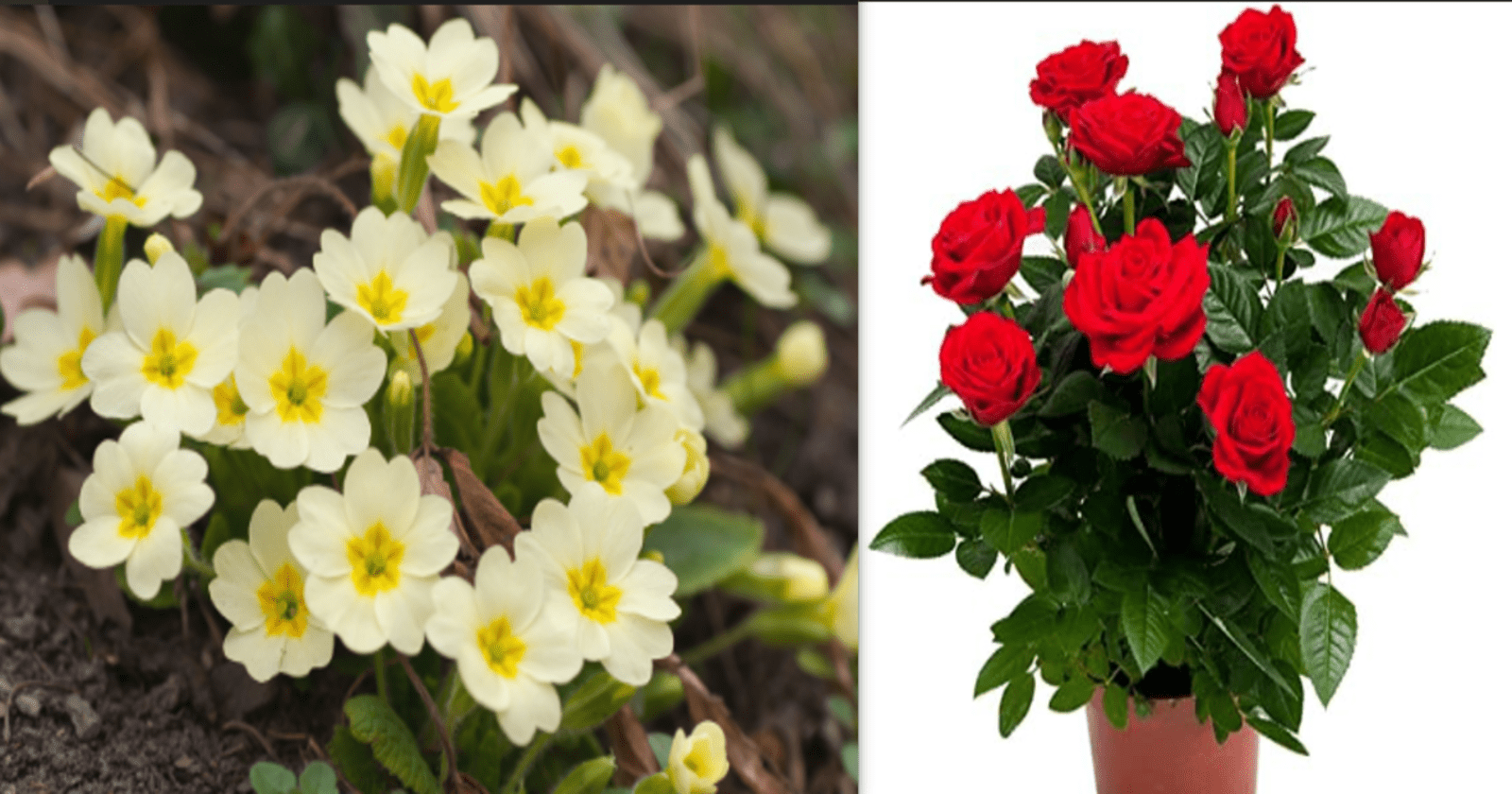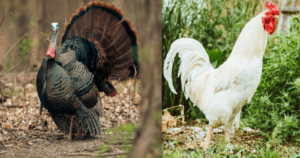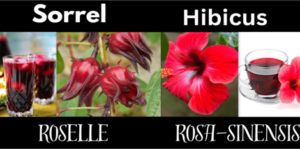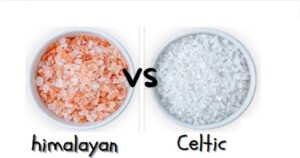Primroses are perennial with short stalk, wrinkled green oblong leaves pale yellow flowers single or clustered on stem. Rose plant features green, glossy leaves and thorny stems. Its main attraction is the ornate blooms, which come in various colors, each with a unique fragrance.
Primula vulgaris, commonly known as the common primrose grow wilds wild in the woods, hedgerows, and fields and is also cultivated. It is often used in ornamental gardens, containers, and as ground cover.
Traditionally it was seen as a medicinal plant and belongs to the Primulaceae family and is indigenous to western and southern Europe, northwest Africa, and certain areas of southwest Asia. It is also referred to as primrose, and occasionally as common primrose or English primrose, to differentiate it from other Primula species that share the name primrose.
Typically, the flowers exhibit a pale yellow hue, although white or pink variations are commonly observed in their natural habitat. These flowers display actinomorphic characteristics, featuring a superior ovary that later transforms into a capsule, opening via valves to release small black seeds.
While the flowers are hermaphroditic, they follow a heterostylous pattern, with individual plants producing either pin flowers (longuistylous flowers with a prominent style capitulum) or thrum flowers (brevistylous flowers with prominent stamens). Successful fertilization occurs exclusively between pin and thrum flowers, rendering pin-to-pin and thrum-to-thrum pollination ineffective.
Some varieties of primrose can tolerate cold temperature and can be grown in cold climates around the world.
Tips when trying to Identify the Primrose plant
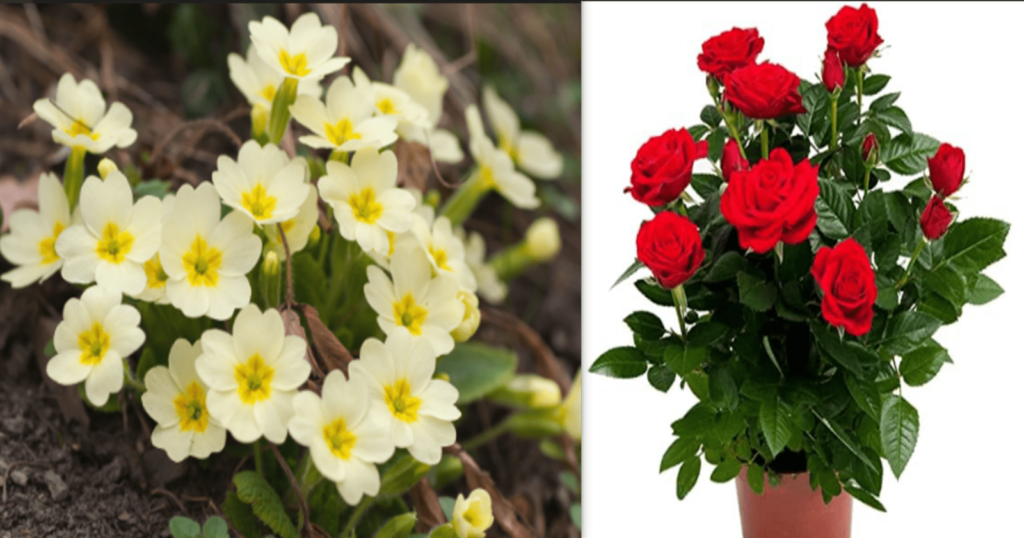
To identify a primrose plant, you can look for the following characteristics.
- Flowers:
- Primroses typically have five-petaled flowers that can come in various colors, including shades of pink, purple, yellow, white, and red.
- The flowers are often arranged in clusters at the top of a single stem.
- Leaves:
- The leaves of primroses are usually basal, meaning they form a rosette at the base of the plant.
- Leaves are often soft, somewhat hairy, and may have a crinkled or scalloped edge.
- Stems:
- The stems of primroses are usually short, and the flowers are held close to the foliage.
- Habitat:
- Primroses are often found in damp or shady locations, such as woodlands, meadows, or along stream banks.
- Blooming Season:
- Primroses typically bloom in spring, although the exact blooming season can vary depending on the species and the local climate.
- Size:
- The size of primrose plants can vary depending on the species and variety. Some are low-growing and compact, while others may reach a foot or more in height.
- Fragrance:
- Some primroses have a mild, sweet fragrance, especially in the evening.
All about Roses
A rose is a type of plant belonging to the Rosa genus, part of the rose family, encompassing around 100 perennial shrub species. People cultivate numerous roses for their exquisite flowers, displaying a spectrum of colors from white and various shades of yellow and pink to deep crimson and maroon.
Roses are often associated with love, beauty, and romance. Different colors of roses can convey different sentiments. For example, red roses are a symbol of love and passion.
Roses are plants with erect, climbing, or trailing shrubs, featuring stems covered in prickles, commonly referred to as thorns. Their leaves are arranged alternately and have a feather-like structure, typically composed of oval leaflets with sharp teeth. Wild roses usually bear flowers with five petals, while cultivated varieties often exhibit double flowers with multiple petal layers.
10 Common diseases that can affect rose plants
- Black Spot (Diplocarpon rosae):
- Symptoms: Black spots with fringed edges on leaves, leading to yellowing and premature leaf drop.
- Control: Use fungicides, remove and destroy infected leaves, provide good air circulation.
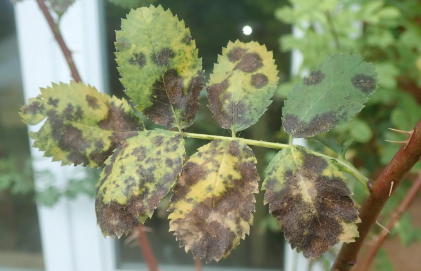
2. Powdery Mildew (Sphaerotheca pannosa):
- Symptoms: White powdery growth on leaves, stems, and buds.
- Control: Fungicides, pruning for better air circulation, choosing resistant varieties.

3. Rust (Phragmidium spp.):
- Symptoms: Orange-brown pustules on the undersides of leaves, leading to yellowing and defoliation.
- Control: Fungicides, removing and disposing of infected leaves, providing good air circulation.
4. Downy Mildew (Peronospora spp.):
- Symptoms: Yellow spots on the upper side of leaves, downy white growth on the undersides.
- Control: Fungicides, pruning for better air circulation, avoiding overhead watering.
5. Rose Mosaic Virus:
- Symptoms: Mottled yellow and green patterns on leaves.
- Control: There is no cure for viral infections; remove and destroy infected plants to prevent spread.
6. Rose Rosette Disease (RRD)
- Symptoms: Rapid growth of shoots, distorted leaves, and red discoloration.
7. Canker (Coniothyrium spp.)
- Symptoms: Sunken, dark lesions on stems, can lead to dieback.
- Control: Pruning infected branches, applying fungicides, promoting good plant hygiene.
8. Botrytis Blight (Botrytis cinerea):
- Symptoms: Grayish-brown fuzzy mold on flowers and stems.
- Control: Fungicides, proper spacing to improve air circulation, removing and disposing of affected plant parts.
9. Rown Gall (Agrobacterium tumefaciens):
- Symptoms: Tumor-like growths on stems and roots.
- Control: Preventing injuries to the plant, avoiding planting in soil where galls are present.
10. Root Rot:
- Symptoms: Wilting, yellowing, and decline of the entire plant.
- Control: Improve soil drainage, avoid overwatering, and consider using fungicides.
Control: Remove and destroy infected plants, control mites (potential vectors), plant resistant varieties.
It’s essential to monitor your rose plants regularly and take appropriate measures to prevent and control these diseases. Proper cultural practices, such as good sanitation, adequate spacing, and choosing disease-resistant varieties, can contribute to the overall health of your rose plants.
Simple Symptoms management for Rose plant Diseases.
| Disease | Management |
|---|---|
| Black Spot | Use fungicidal sprays, remove infected leaves, and ensure good air circulation |
| Powdery Mildew | Use fungicidal sprays, provide adequate spacing, and remove affected leaves |
| Rust | Apply fungicides, remove infected leaves, and ensure proper ventilation |
| Botrytis Blight | Remove infected plant parts, improve air circulation, and avoid overhead watering |
| Use insecticidal soap, neem oil, or release beneficial insects like ladybugs | |
| Spider Mites | Use miticides, wash plants with water, and maintain humidity |
| Rose Mosaic Virus | There’s no cure; remove and destroy infected plants to prevent spread |
🔑Key Difference Between Primrose and Rose

| Primrose | Rose |
|---|---|
| Primulaceae family | Rosaceae family |
| Over 500 species | Over 300 species |
| Name is of Latin origin | Name of Latin origin |
| Stem is very short | Stem are long and grow thorns |
| Ground covering, low-growing plants, suitable for borders | Plants can be Shrub, climbing or trailing |
| Some species Can tolerate cold temperature | Prefers temperature between 60 and 80 degrees. |
Important Facts about Primrose you may not know.
This flower is among the first to appear in spring
Shakespeare frequently incorporated the primrose flower as a symbol in his plays. In Suzanne Collins’ 2008 young adult novel “The Hunger Games,” the main character Katniss’ sister is named after the evening primrose, showcasing a more contemporary connection to this floral theme.
One is commonly known as primrose (Primula spp.), while the other is referred to as evening primrose (Oenothera spp.).
To safeguard the species from undue harm, the plucking or extraction of primroses from their natural habitats is prohibited in numerous countries and in the UK (united kingdom) such as under the UK Wildlife and Countryside Act 1981 (Section 13, part 1b).
Are Rose Edible?
Yes, roses are edible, and various parts of the rose plant are used in culinary applications. The petals are the most commonly consumed part and are often used to make rose water, rose syrup, or added to salads, desserts, and teas for flavor and decoration. It’s important to ensure that the roses you consume are free from pesticides and other chemicals. Use only organically grown roses or those specifically designated as edible.
Culinary uses of roses
Roses have been used in culinary applications for centuries, adding a unique and delicate flavor to various dishes.
- Rose Water:
- Extracted from rose petals, rose water is a common ingredient in many Middle Eastern and Indian desserts. It’s used to flavor sweets like baklava, gulab jamun, and various milk-based desserts.
- Rose Petal Jam:
- Rose petals can be used to make a fragrant and flavorful jam. The petals are often combined with sugar and sometimes lemon juice to create a sweet and floral spread for toast or pastries.

3. Rose Petal Syrup:
- A simple syrup infused with rose petals can be used to sweeten beverages like lemonade, cocktails, or mocktails. It adds a subtle floral note to the drinks.
4. Rose Petal Tea:
- Dried rose petals can be used to make a soothing and aromatic tea. The tea is believed to have calming properties and is often enjoyed for its delicate flavor and fragrance.
5. Rose-Infused Vinegar:
- Rose petals can be infused into vinegar to create a floral vinegar. This can be used in salad dressings or as a unique ingredient in various recipes.
6. Rose Petal Ice Cream:
- Infusing rose petals into the cream mixture during the ice cream-making process can result in a delightful rose-flavored ice cream.
- https://www.seriouseats.com/rose-petal-ice-cream-recipe you can find a recipe in the link provided
7. Rose Petal Salad:
- Fresh rose petals can be added to salads to provide both a visual appeal and a subtle floral flavor. Make sure the roses used are pesticide-free and safe for consumption.
8. Rose Petal Butter:
- Mix finely chopped rose petals into softened butter for a unique and aromatic spread. This can be used on bread or as a finishing touch for cooked dishes.
9. Rose Petal Honey:
- Infusing honey with rose petals creates a fragrant honey with a floral taste. This can be drizzled over desserts, yogurt, or used as a sweetener in tea.
10. Candied Rose Petals:
- Candying rose petals involves coating them in sugar, which preserves them and enhances their sweetness. These can be used as edible decorations for cakes, cupcakes, or other desserts.
🔑 Key tips when using Roses for cooking
When using roses in cooking, make sure to remove the white, bitter base of the petals, as it can affect the taste. Also, be cautious about consuming roses from florists or nurseries, as these may be treated with chemicals not intended for human consumption. Always use roses that are specifically labeled as edible or that you have grown yourself without the use of harmful substances.
Are Primrose Edible?
Flowers and leaves are both suitable for consumption, offering flavors that span from gentle lettuce-like notes to slightly bitter salad greens. While the leaves can be incorporated into soups, it is recommended to combine them with other plants to balance their occasionally robust taste. Additionally, the leaves can be utilized for brewing tea, and the young flowers can be transformed into primrose wine.
Culinary Use of Primrose
Primrose, also known as Primula, is a genus of flowers that includes many species. While some varieties of primrose are toxic and not suitable for culinary use, certain types are considered edible and have been used in traditional cuisine. It’s important to note that you should only consume flowers that are specifically labeled as edible, and it’s best to consult with an expert or reliable source before attempting to eat any wild plants.
Here are some culinary uses of edible primrose flowers:
- Salads: Primrose flowers can be used to add color and a mild, floral flavor to salads. They pair well with mixed greens and other edible flowers.
- Garnishes: Use primrose flowers to garnish desserts, cakes, pastries, and beverages. Their vibrant colors can enhance the visual appeal of your dishes.
- Candied Primroses: Dip primrose flowers in egg white or a sugar syrup, let them dry, and use them as candied decorations for cakes and desserts.
- Herbal Teas: Some primrose varieties, like the cowslip (Primula veris), have been used to make herbal teas. The flowers can be steeped in hot water to create a soothing beverage.
- Jams and Jellies: Primrose petals can be infused into jams and jellies, adding a delicate floral aroma and taste.
Remember, it’s crucial to positively identify the specific type of primrose you have and ensure it is safe for consumption. Also, only use flowers that are grown without pesticides or other chemicals. If you have any doubts or concerns, it’s advisable to consult with a knowledgeable botanist or herbalist before using primrose in your cooking.
🔑Key health benefits of Primrose vs Rose
| Primrose Health Benefits | Rose Health Benefits |
|---|---|
| Rich in Gamma-Linolenic Acid (GLA), which may help reduce inflammation | High in Vitamin C, promoting immune system health |
| Supports skin health and may alleviate symptoms of eczema | Contains antioxidants that may combat free radicals and reduce oxidative stress |
| May assist in managing symptoms of premenstrual syndrome (PMS) | Known for its anti-anxiety properties and potential mood-boosting effects |
| Contains essential fatty acids that support cardiovascular health | Natural astringent properties, beneficial for skin toning and complexion |
| Potential role in improving joint pain and arthritis symptoms | Rosehip extract may contribute to joint health and reduce inflammation |
Medical uses of Primrose
- Skin Conditions:
- Eczema: Some studies suggest that EPO .
- may help alleviate symptoms of eczema, such as itching and inflammation.
- Women’s Health:
- Premenstrual Syndrome (PMS): Evening primrose oil is commonly used to alleviate symptoms of PMS, including breast pain, bloating, and mood swings.
- Breast Pain: It may be used to relieve breast pain associated with the menstrual cycle.
- Rheumatoid Arthritis:
- Some studies have explored the potential anti-inflammatory effects of EPO in the context of rheumatoid arthritis, but more research is needed.
- Nerve Pain:
- Evening primrose oil has been suggested for the treatment of nerve-related conditions, such as diabetic neuropathy.
- Osteoporosis:
- Limited research has investigated the effects of EPO on bone health and osteoporosis.
- Breast Cancer:
- Some studies have examined the use of evening primrose oil in breast cancer treatment, but the evidence is inconclusive.
- Cardiovascular Health:
- There is some research suggesting that EPO may have cardiovascular benefits, such as lowering blood pressure and improving lipid profiles, but more studies are needed.
- Attention Deficit Hyperactivity Disorder (ADHD):
- Some preliminary research has explored the use of EPO in managing symptoms of ADHD.
Products of Primrose .
- Evening Primrose Oil (EPO) Supplements:
- EPO is often encapsulated in soft-gel or capsule form and sold as a dietary supplement. These supplements are commonly used for conditions such as PMS, eczema, and breast pain.
- Topical Creams and Lotions:
- Evening primrose oil is sometimes used as an ingredient in topical creams and lotions. These products are applied directly to the skin and may be used to alleviate symptoms of skin conditions like eczema or to moisturize and soothe dry skin.
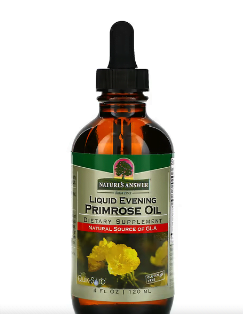
4.Liquid Extracts:
- Liquid extracts of evening primrose oil are available and can be added to drinks or food. This form may offer an alternative to capsules for those who have difficulty swallowing pills.
5. Shampoos and Hair Products:
- Evening primrose oil is included in some hair care products, such as shampoos and conditioners, for its potential benefits on hair and scalp health.
6. Capsules Combined with Other Supplements:
- Some dietary supplements combine evening primrose oil with other vitamins, minerals, or herbal extracts to create comprehensive formulations for specific health purposes.
7. Facial Serums:
- Evening primrose oil is sometimes incorporated into facial serums for its potential skin-nourishing properties. These products may target issues such as dryness, fine lines, or inflammation.
8. Baby Care Products:
- Some baby care products, such as lotions and diaper creams, may contain evening primrose oil for its purported benefits on sensitive baby skin.
9.Herbal Tea Blends:
- Evening primrose is also available in herbal tea blends. While the oil is not directly extracted in tea form, the dried flowers and leaves of the plant may be used in herbal tea mixtures.
Drugs that Interact with Primrose Oil (EPO)
- Blood-thinning medications (anticoagulants): EPO could potentially increase the risk of bleeding, particularly if you are using blood thinners like aspirin, warfarin (Coumadin), or clopidogrel (Plavix).
- Blood pressure medications: While the link is not definitively established, there is a possibility that EPO may lower blood pressure in certain individuals. If you are on medications to manage high blood pressure, it is advisable to seek guidance from your doctor before incorporating EPO.
- Phenothiazines: Individuals taking phenothiazines, a class of medications prescribed for schizophrenia, should avoid EPO, as it may elevate the risk of seizures.
- Medications to control seizures: EPO has the potential to lower the seizure threshold, making it unsuitable for individuals prone to seizures. If you have a history of seizures or are taking medications to control them, it is crucial to avoid EPO.
- Antidepressants: EPO may interact with certain antidepressants, including selective serotonin reuptake inhibitors such as:
- Citalopram (Celexa)
- Escitalopram (Lexapro)
- Fluoxetine (Prozac)
- Paroxetine (Paxil)
- Sertraline (Zoloft)
